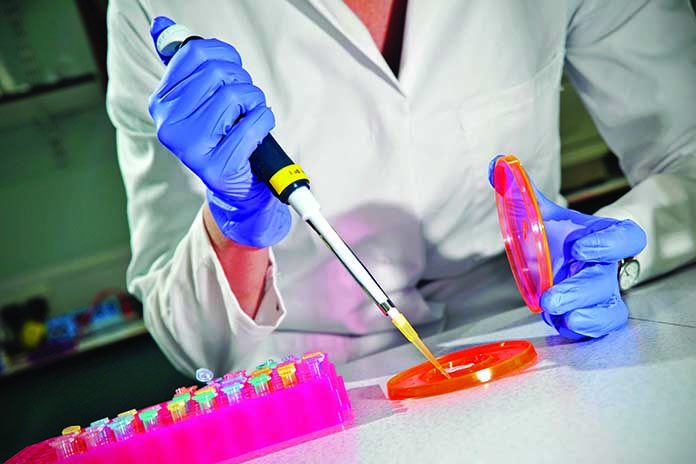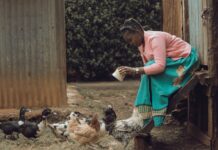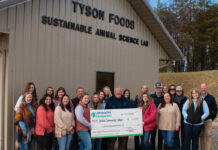
The research on how Infectious Laryngotracheitis can spread from vaccinated flocks was made possible in part by an endowing Foundation gift from Claxton Poultry and is part of the Association’s comprehensive research program encompassing all phases of poultry and egg production and processing. A brief summary of the completed project is shown below.
Project #699: Does broiler vaccination with HVT-LT (INNOVAX®) vector vaccine increase the Infectious Laryngotracheitis virus challenge infectious dose? – Dr. Maricarmen Garcia, University of Georgia, Athens, Ga.
Dr. Maricarmen Garcia, at the University of Georgia, recently completed a research project that studied how well a recombinant ILT vaccine protected broilers when various doses of the vaccine were used. She found that all dosage levels used protected against the clinical signs of the disease, but none of the dosage levels prevented the broilers from shedding the ILT challenge virus to other broilers. This study reinforces the observation that biosecurity is very important to control spread of ILT from vaccinated flocks.
The overall objectives of this research were to evaluate the protection induced by an rHVT-LT recombinant vector vaccine when administered in-ovo in broilers and to assess the potential of rHVT-LT vaccinated chickens to spread virus to contact chickens following challenge. The rHVT-LT vaccine is a Marek’s disease vaccine, which also expresses proteins of Infectious Laryngotracheitis virus. This study demonstrated that the rHVT-LT vaccine administered at three standardized doses – 6000 (full dose), 3000 and 1000 plaque forming units (PFU) – did not increase or limit the level of protection against challenge. Independently of the vaccine dose administered, vaccinated chickens showed reduction in clinical signs, maintained body weight gain and demonstrated a reduction of 52-65 percent in challenge virus replication in the trachea, as compared to the non-vaccinated challenge group of chickens. In this study all aspects of the in-ovo vaccination were carefully controlled. Under field conditions many factors involving vaccine storage, reconstitution and administration can negatively affect the vaccine titer. Therefore, although under experimental conditions chickens vaccinated with the 1000 PFU dose showed 63 percent reduction in challenge virus replication, the use of such a low dose may lead to poor protection under field conditions. Despite the reduction of challenge virus replication in the trachea of vaccinated chickens, transmission of the challenge virus from vaccinated to contact chickens was evidenced by clinical signs of the disease and elevated viral load in the trachea of contact chickens. Therefore, independently of the vaccine dose, protection elicited by the rHVT-LT vaccine was considered incomplete as apparently healthy chickens were shedding virus. This result underscores the importance for the establishment of proper biosecurity measures in rHVT-LT vaccinated flocks, particularly those located in endemic zones of the disease. Results from this study also suggest that the spread of challenge virus from rHVT-LT vaccinated chickens to contact chickens, and among contact chickens, was enhanced by increased inlet air speed and decreased exhaust air speed. Studies are warranted to better understand the role of air exchange in the spread of ILTV in rHVT-LT vaccinated flocks.
A complete report may be obtained by going to USPOULTRY’s website, www.uspoultry.org.
For information contact:
U.S. Poultry & Egg
Association
1530 Cooledge Road
Tucker, Georgia 30084-7303
Phone: (770) 493-9401
Fax: (770) 493-9257
Website: www.uspoultry.org

















